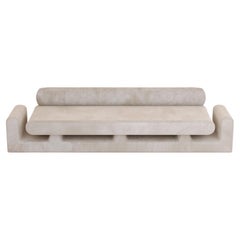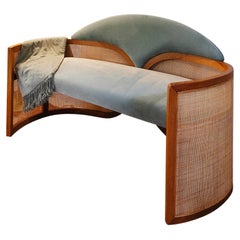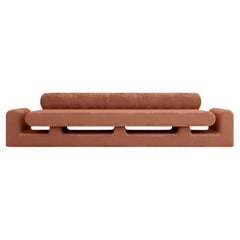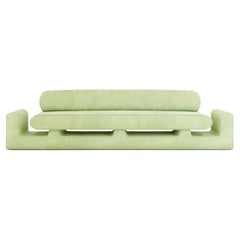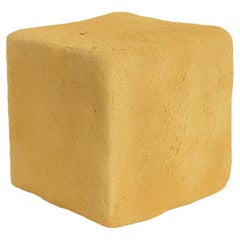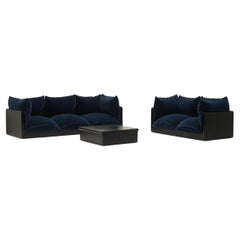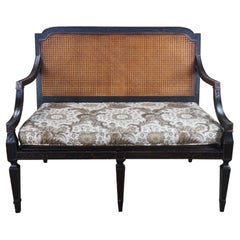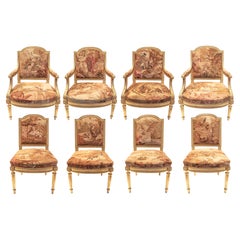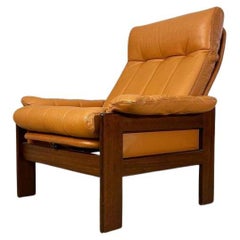Middle East - Living Room Sets
to
2,262
399
5
Height
to
Width
to
Depth
to
5
5
5
5
5
5
5
5
5
5
5
5
1
5
4
3
3
1
1
5
5
3
2
1
Item Ships From: Middle East
Hug Grey Sofa by Rejo Studio
Located in Geneve, CH
Hug grey sofa by Rejo Studio
Dimensions: D 315 x W 95 x H 76 cm
Materials: Wooden structure, with Velvet
Also available in different colours.
Long comfortable hug. The hug sofa...
Category
2010s Saudi Arabian Post-Modern Middle East - Living Room Sets
Materials
Velvet, Wood
$14,510 / item
Modern Oak Wood Seating Cane Weaving Cross My Heart Loveseat Bench, Carla Baz
By Carla Baz
Located in Geneve, CH
Modern Oak Wood Seating Cane Weaving Cross My Heart Loveseat Bench, Carla Baz
Dimensions: W 160 X D 70 X H 82 CM
Weight: 55 kg
Material: French Oak, Ent...
Category
2010s Lebanese Post-Modern Middle East - Living Room Sets
Materials
Oak
Hug Brown Sofa by Rejo Studio
Located in Geneve, CH
Hug Brown Sofa by Rejo Studio
Dimensions: D 315 x W 95 x H 76 cm
Materials: Wooden structure, with Velvet
Also Available in different colours.
Long co...
Category
2010s Saudi Arabian Post-Modern Middle East - Living Room Sets
Materials
Velvet, Wood
$14,510 / item
Hug Green Sofa by Rejo Studio
Located in Geneve, CH
Hug green sofa by Rejo Studio.
Dimensions: D 315 x W 95 x H 76 cm.
Materials: wooden structure, with velvet.
Also available in different colours.
Long comfortable hug. The hug sofa...
Category
2010s Saudi Arabian Post-Modern Middle East - Living Room Sets
Materials
Velvet, Wood
$14,510 / item
TITI 01 Sculptural Stool – All-Weather Yellow Concrete by Mary-Lynn & Carlo
Located in Geneve, CH
TITI 01 Sculptural Stool – All-Weather Yellow Concrete by Mary-Lynn & Carlo, 2021.
The Elephant Project.
Dimensions: stool H 42 x W 42 x D 42 cm.
Materials: concrete colored, foam po...
Category
2010s Lebanese Modern Middle East - Living Room Sets
Materials
Concrete
Related Items
“Down” sofa set by Carlo Bartoli for Rossi di Albizzate, 1970s Italy.
By Carlo Bartoli, Rossi di Albizzate
Located in Landgraaf, NL
“Down” sofa set by Carlo Bartoli for Rossi di Albizzate, 1970s Italy. Part of the Down series this set consists of one 3-seater, one 2-seater and a coffee table. Satin black lacquere...
Category
1970s Italian Mid-Century Modern Vintage Middle East - Living Room Sets
Materials
Mohair, Wood
$22,184 / set
H 29.53 in W 84.26 in D 28.75 in
Vintage Baker Milling Road Chinoiserie Lacquered & Caned Settee Loveseat Bench
By Baker Furniture Company, Milling Road
Located in Dayton, OH
Late 20th Century Baker Furniture Milling Road Chinoiserie Settee. Features a Sheraton style frame and black lacquered Chinoiserie finish with gold linework and trim. The settee fe...
Category
Late 20th Century American Chinoiserie Middle East - Living Room Sets
Materials
Fabric, Rattan, Wood, Lacquer
$1,760 Sale Price
20% Off
H 36 in W 42 in D 25 in
Carolina Bamboo & Cane Bench
Located in Bellport, NY
The Carolina Bench beautifully hand crafted in Spain of bamboo and cane. The seat is covered in a sunbrella natural tone fabric. The bottom level is gre...
Category
21st Century and Contemporary Spanish British Colonial Middle East - Living Room Sets
Materials
Linen, Bamboo, Cane
Hug Sofa Upholstered, Chubby Arms by Rejo Studio
By REJO design studio
Located in Riyadh, SA
Long comfortable hug. The hug sofa features two welcoming chubby arms and a magical handy space for your books.
This has been handcrafted at our studio. Part ...
Category
2010s Saudi Arabian Modern Middle East - Living Room Sets
Materials
Wool, Velvet
$9,000 Sale Price
10% Off
H 28.35 in W 114.18 in D 29.53 in
Mid Century Modern Loveseat in Bent Wood by Cimo, c. 1950s
By Moveis Cimo
Located in New York, NY
Available today, with domestic shipping in NYC metro area included, this Mid Century Modern Loveseat in Bent Wood by Cimo, c. 1950s is nothing less than gorgeous!
Made with precis...
Category
Mid-20th Century Brazilian Mid-Century Modern Middle East - Living Room Sets
Materials
Hardwood
Sculptural Side Table / Stool Solid Tamarind Wood
Located in Jimbaran, Bali
A wonderfully sculptural round side table or stool. Its neutral pigment makes it perfect for any space. A uniquely sculptural and versatile piece certain to invoke conversation. It was crafted from a solid block of tamarind wood...
Category
21st Century and Contemporary Indonesian Organic Modern Middle East - Living Room Sets
Materials
Wood
Mushroom Concrete Stool in Black or White
Located in Paris, FR
Stool mushroom concrete in black.
Handcrafted very strong finishes.
Also available in white finish.
Category
21st Century and Contemporary Italian Middle East - Living Room Sets
Materials
Concrete
Sculptural Side Table / Stool Solid Mango Wood
Located in Jimbaran, Bali
A wonderfully sculptural round side table or stool. Its neutral pigment makes it perfect for any space. A uniquely sculptural and versatile piece certain to invoke conversation. It w...
Category
21st Century and Contemporary Indonesian Organic Modern Middle East - Living Room Sets
Materials
Wood, Fruitwood
Sculptural Side Table / Stool Solid Mango Wood
Located in Jimbaran, Bali
A wonderfully sculptural round side table or stool. Its neutral pigment makes it perfect for any space. A uniquely sculptural and versatile piece certain to invoke conversation. It w...
Category
21st Century and Contemporary Indonesian Organic Modern Middle East - Living Room Sets
Materials
Wood, Fruitwood
Chess Stool/ Sculptural Side Table
By Maika Palazuelos
Located in Ciudad de México, CDMX
Two hand-turned wooden pieces with an elegant piano polish inform an imaginative play as sculptural stools or side table sets. Directly referencing chess pieces, these stools luidica...
Category
2010s Mexican Post-Modern Middle East - Living Room Sets
Materials
Resin, Wood
Danish Modern Teak Loveseat
Located in VANCOUVER, CA
Teak Danish loveseat circa 1970s. Robust, solid frame with lovely joinery. The seat deck webbing needs updating, and the upholstery is in decent condition.
An unrestored item with t...
Category
1960s Danish Scandinavian Modern Vintage Middle East - Living Room Sets
Materials
Teak
Suelo Modern Loveseat
By Bertu Furniture
Located in Oak Harbor, OH
This Suelo® modern loveseat is beautifully constructed from solid wood in Ohio, USA. The sofa's silhouette is simple, modern, and sleek with comfortable back and seat cushions. This ...
Category
2010s North American Modern Middle East - Living Room Sets
Materials
Hardwood
Previously Available Items
Set of Giltwood 4 Fauteuils and 4 Side Chairs with Aubusson Upholstery
By Aubusson Manufacture
Located in Dubai, AE
Giltwood seating set comprising of four side chairs and four armchairs. All Aubusson's needlework back and seats depict scenes from Aesop's Fables.
There is a long tradition of man...
Category
19th Century French Louis XVI Antique Middle East - Living Room Sets
Materials
Upholstery, Giltwood
H 38.59 in W 25.99 in D 25.99 in
Lounge Set by Sven Ellekaer for Skippers Mobler A/S Design, 1960s, Denmark
By Sven Ellekaer
Located in Tel Aviv-Yafo, Tel Aviv District
Stunning Mid-Century modern Scandinavian lounge set by Sven Ellekaer for Skippers Mobler A/S Design, 1960s Denmark.
There is a three-seater sofa and one lounge chair. Made of solid Rosewood and brown leather in excellent condition. The lounge charis...
Category
1960s Danish Mid-Century Modern Vintage Middle East - Living Room Sets
Materials
Leather, Rosewood
H 35.04 in W 84.65 in D 31.5 in
Hug Green Sofa by Rejo Studio
Located in Geneve, CH
Hug green sofa by Rejo Studio.
Dimensions: D 315 x W 95 x H 76 cm.
Materials: wooden structure, with velvet.
Also available in different colours.
Long comfortable hug. The hug...
Category
2010s Saudi Arabian Post-Modern Middle East - Living Room Sets
Materials
Velvet, Wood
Recently Viewed
View AllMore Ways To Browse
Thorn Glass Clear
Threshold Guardian
Tiffany Florentine
Tiffany Opalescent Glass
Tiffany Shaker
Tiffany Silver Tea Pot
Tiffany Sterling Silver Cheese
Tiffany Tea Pot
Tiffany Trinket
Tiffany Trumpet Vase
Tiger Bone
Tiki Sculpture
Tool Bag Vintage
Toucan Mexican
Tourbillons Vase
Travel Armoire
Tripod Midcentury Modern Plant Stands
Tsubo Jar
